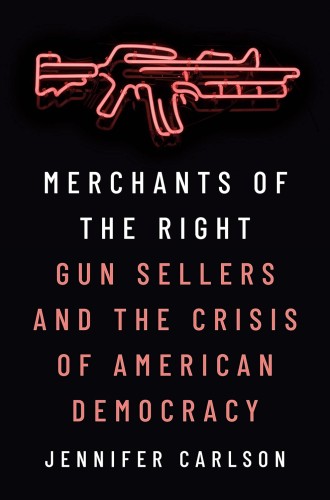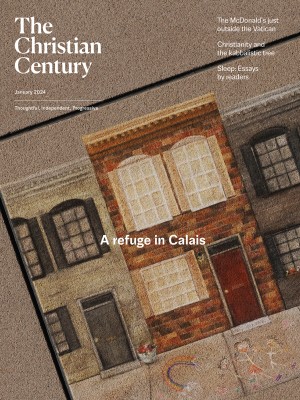Understanding the ideology of guns
Sociologist Jennifer Carlson interviewed 50 gun sellers to find out why so many Americans flock toward firearms.
Jennifer Carlson, who teaches sociology at Arizona State University, is a noted expert on US gun culture. By my count, this is her third full-length work on the subject, in addition to a coedited volume. But this important new book begins in a highly personal way, reflecting a problem with which many of us can deeply identify. Carlson says she writes in part to try to understand the politics of her own late father, from whom she was deeply estranged, at least politically. They couldn’t talk about politics—the divide was too large.
Carlson says that, before her father’s death in 2019, her dad “still managed to vote absentee one last time in Michigan, where his vote counted much more than it would had he cast it in Arizona. . . . On the day that Trump was elected, I was angry that my father couldn’t see the consequences of his vote.” She wonders whether her father would have been all in on everything that happened over the next four years, and everything that continues to happen in the aftermath of the Trump-created crisis after the 2020 election. This book, then, shows a sociologist doing her work to understand what has gone wrong on the American right, motivated by a desire to understand her dead father.
Read our latest issue or browse back issues.
Carlson had me with this introduction, and off we went. The book’s method stems from Carlson’s in-depth interviews with 50 US gun sellers in four states, undertaken during the pandemic. The interviewees are identified for the reader by age and state each time they are quoted. While Carlson also cites progun media sources and other relevant background studies, the interviews are both central and hugely illuminating.
The book’s context is the surge in gun sales during the epic days of 2020 and thereafter. The convergence of the pandemic, the George Floyd murder and consequent protests, the 2020 elections, and the January 6 insurrection triggered massive gun sales. These sales moved beyond the typical conservative White male buyers to include many other segments of the population, all of whom felt threatened in different ways by contemporary events. Carlson shows that in most states during the pandemic, gun shops were treated as essential services and were not shut down by pandemic regulations, at least not for long. At a time when it felt like US society was rocked to its foundations, more and more Americans found solace and comfort in their guns.
The book’s purpose is not just to document these remarkable developments but to examine the ideology about guns that sellers brought into their encounters with customers during this fateful period—and to ask what this reveals about contemporary right-wing ideology, including that edge of it that is moving away from support for democracy.
Carlson’s discovery is that this pro-gun ideology consists of three pillars: armed individualism, conspiracism, and partisanship. Armed individualism “positions guns as the solution to both government overreach and government underreach.” Conspiracist thinking—about the pandemic, government responses, gun legislation, you name it—“stood to undermine liberal democracy by stigmatizing collective action as either too spontaneous to take seriously or so well-organized as to be suspicious.” Extreme partisanship directed by conservative gun sellers against liberals “took shape not as principled disagreement among political equals but rather as an impulse to stigmatize, pathologize, and even dehumanize political adversaries.”
Carlson concludes by labeling “contemporary gun politics” as “the canary in the coal mine of American democracy,” a revelation of extreme libertarianism and the growing antidemocratic illiberalism that is destabilizing American culture and politics. Gun culture and its purveyors, therefore, are important for Carlson not just in themselves and because of their epically awful results, but as a window into the forces that threaten to unravel our society and our democracy. This book is a must-read for all who seek to understand those forces.






